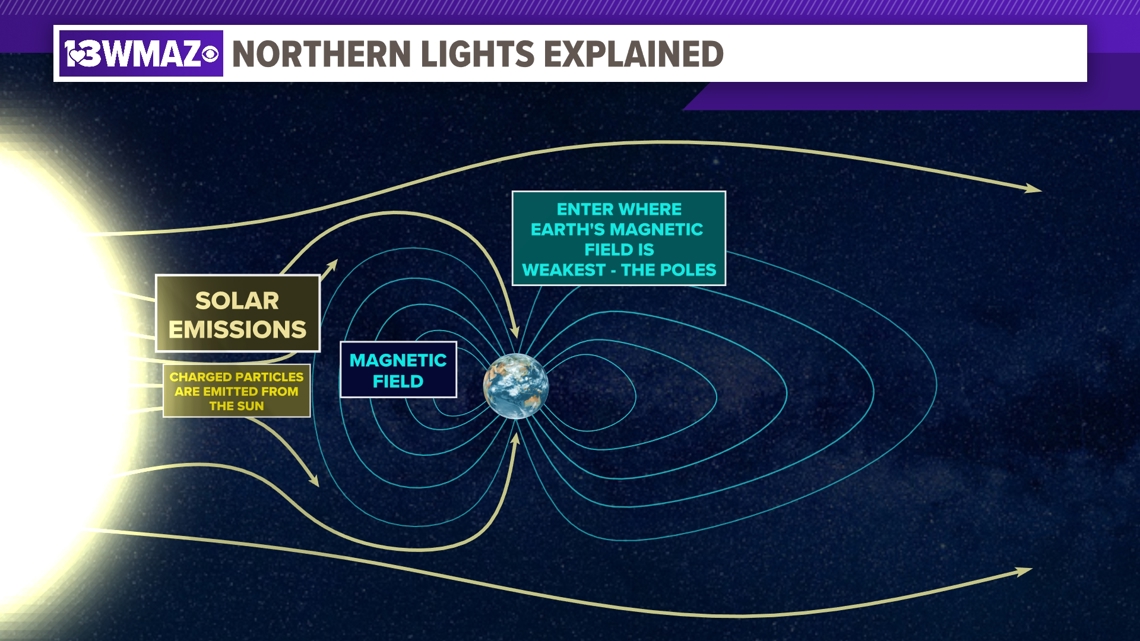MACON, Ga. — The aurora borealis — also known as the Northern Lights — is a true atmospheric wonder.
However, what causes this spectacle to happen, or better yet, why did we see them all the way down here in Central Georgia this past weekend?
The aurora is caused by emissions from the Sun. These emissions release clouds of electrically charged particles that can travel millions of miles all the way to Earth. Some of these particles are captured by the Earth’s magnetic field, causing them to heat up.
So the northern lights are essentially particles from the Sun interacting with the molecules in our atmosphere.


Their wavy shape comes from the lines of force of the Earth’s magnetic field that aren’t usually visible.
This display is usually only visible at the North and South poles, so why did we see it here in Central Georgia?
Late last week, the Sun produced a massive solar storm that emitted more particles than usual into our atmosphere. This allowed for areas farther south to see the spectacle.
Most of you caught the pinkish-red hue in the night sky from these lights, as opposed to the typical green we see near the poles.
Different colors of the aurora are seen because of two things: different heights of particles interacting and interactions with our atmosphere’s two main gases: oxygen and nitrogen.
So our pink color was from oxygen particles very high in the atmosphere interacting with particles from the sun.
This was caused by a "G5" geomagnetic storm, which is the highest level of rank for these storms and the first we've seen on Earth since 2003.
This is very rare, and typically happens once in a generation.

